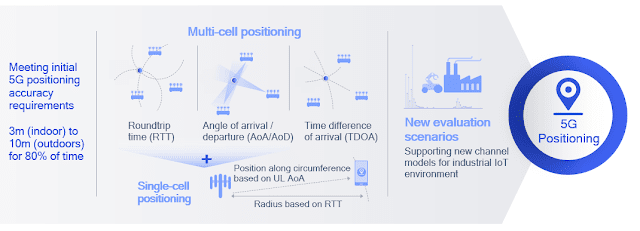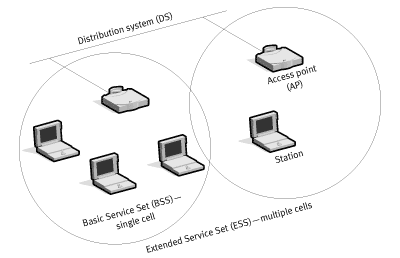LTE筆記: 5G 定位的應用與演進 ~1
Release 16 supports multi-/single-cell and device-based positioning, defining a new positioning reference signal (PRS) used by various 5G positioning techniques such as roundtrip time (RTT), angle of arrival/departure (AoA/AoD), and time difference of arrival (TDOA). Roundtrip time (RTT) based positioning removes the requirement of tight network timing synchronization across nodes (as needed in legacy techniques such as TDOA) and offers additional flexibility in network deployment and maintenance. These techniques are designed to meet initial 5G requirements of 3 and 10 meters for indoor and outdoor use cases, respectively. In Release 17, precise indoor positioning functionality will bring sub-meter accuracy for industrial IoT use cases.
簡單來說, R16 定義了一個新的參考訊號 (PRS),
用以支持定位技術: RTT, AoA/AoD, TDOA, 並放寬了同步的要求.
在 R16 中, 針對定位的目標為: (室內) 3 公尺, (室外) 10 公尺 的定位精確度.
針對精密室內定位的需求 (公尺內的定位精度), 將在 R17 中繼續討論.
針對 R16 的定位要求: (室內) 3 公尺, (室外) 10 公尺 的定位精確度,
來自於 FCC 的緊急定位資訊, 定義於 TR 38.855, 其內容為:
- 針對 80% 使用者, 水平定位誤差為: 50 公尺
- 針對 80% 使用者, 水平定位誤差為: 5 公尺
- 定位時間延遲為 30 秒
同時, 針對嚴謹的定位相關服務, TR 38.855 的技術標準定義為:
- 針對 80% 使用者, 水平定位誤差為: (室內) 3 公尺, (室外) 10 公尺
- 針對 80% 使用者, 水平定位誤差為: (室內) 3 公尺, (室外) 3 公尺
- 定位時間延遲為 1 秒
 來自: https://www.qualcomm.com/news/onq/2020/07/03/what-key-technology-inventions-will-drive-5g-expansion
來自: https://www.qualcomm.com/news/onq/2020/07/03/what-key-technology-inventions-will-drive-5g-expansion對於 3GPP R16 的定位技術而言, 也可以分成兩類:
第一類為多基地台偕同定位, 包含: RTT, AoA/AoD, 以及 TDoA,
第二類為單基地台定位, 其技術使用 AoA/AoD 資訊取得角度,
並搭配 RTT 資訊取得距離, 並結合兩者進行定位.
關於上述定位的細節, 我們將在後續文章中說明.



留言
張貼留言